NIL
Texas Tech Red Raiders – Official Athletics Website
OKLAHOMA CITY, Oklahoma – Texas Tech (43-12) shut out the No. 8 seed Baylor Bears (27-27) 4-0 on Thursday in the quarterfinal round of the Big 12 Championship at Devon Park. NiJaree Canady allowed just one hit as Tech’s offense came through in the fifth inning to secure the win. The Red Raiders recorded […]
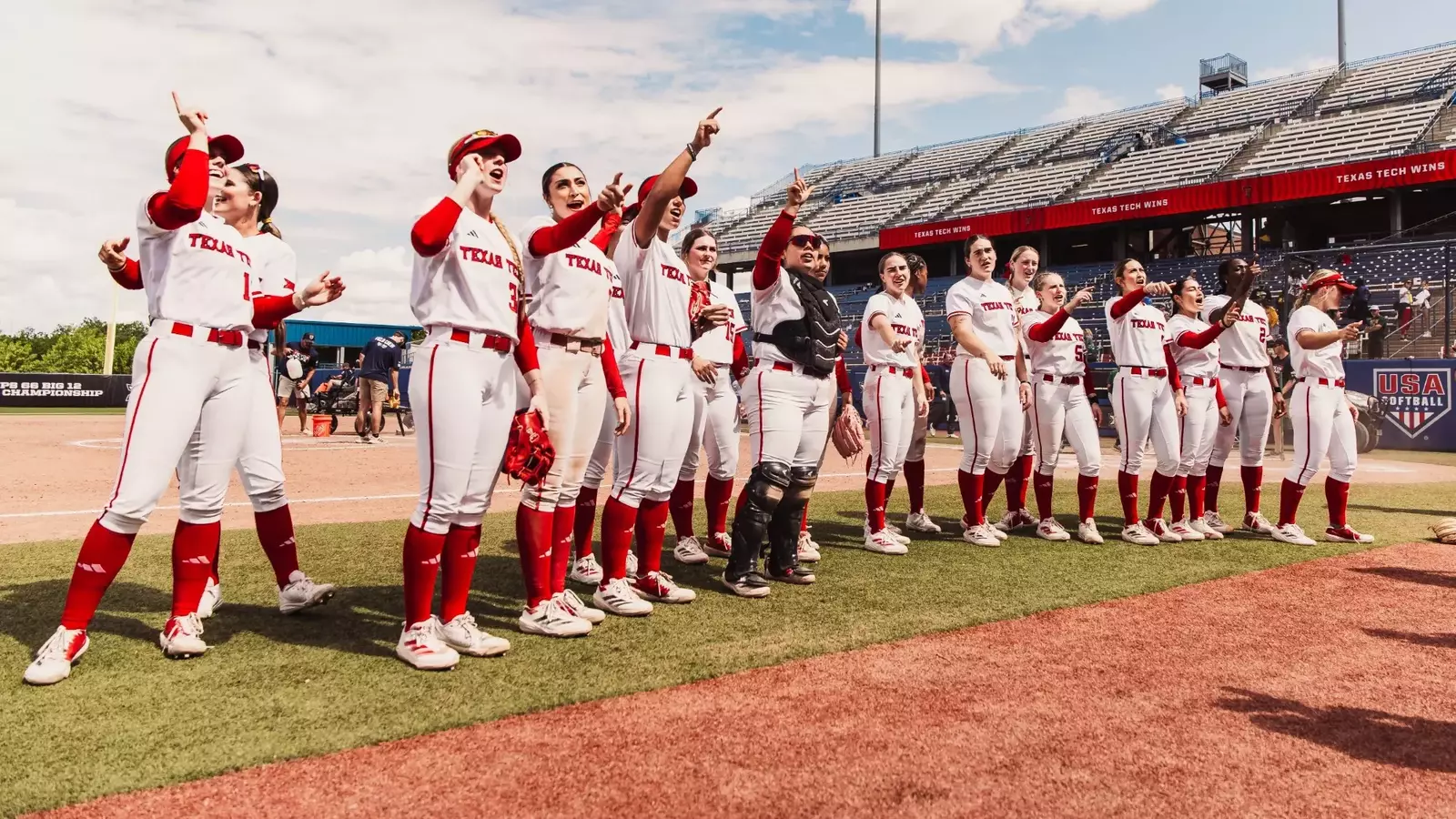
The Red Raiders recorded their 20th win in the Big 12 Championship and their first shutout win since 2017 when they shutout Iowa State.
Canady improved to 24-5 on the year as she rode a perfect game into the sixth inning before giving up a hit. The Big 12 Pitcher of the Year finished her 6.2 innings of work with 13 strikeouts – seven of which were consecutive, striking out the side twice in the second and third innings.
Mihyia Davis had a little-league home run in the fifth inning after reaching on a single and then coming all the way home on an error by the Bears’ outfield.
How it happened:
Canady immediately proved why she was the Big 12 Pitcher of the Year as she struck out eight of the first 10 batters she faced and struck out the side in the second and third innings. The junior finished with 13 strikeouts and held a perfect game going into the sixth inning.
Neither team had it easy on offense as Baylor’s Lillie Walker was having an impressive game of her own, getting Tech to pop out and not allowing much solid contact.
That changed in the fourth inning when Alexa Langeliers picked up Tech’s first hit of the day on a single into left field. Nothing came of that hit, but solid contact from Langeliers followed by a hard-hit line drive by Alana Johnson gave the Red Raider bats some confidence.
That confidence carried over the fifth inning after Canady drew a lead-off walk and Makayla Garcia came in to run for her. Logan Halleman followed that at-bat as a pinch hitter and executed a perfect bunt single that got runners at first and second with no outs.
Freshman Hailey Toney then delivered her team-leading fifth sac bunt of the season to push runners over to second and third which brought up Demi Elder who drove in a run on a fielder’s choice with some help from a Baylor error.
With runners on the corners, Davis smoked a ball into right field for an RBI single but would then come all the way home to score as the Baylor defender couldn’t corral the ball and let it roll all the way to wall allowing Elder to score from first followed shortly after by Davis to put Tech up 4-0.
Baylor loaded the bases in their half of the seventh inning, but Canady shutdown any chances of a comeback to advance Tech to the semifinals to take on No. 5 seed Arizona State.
UP NEXT: The Red Raiders will take on the No. 5 seeded Sun Devils at 3 p.m. tomorrow for a spot in the Big 12 Championship game.
NIL
Lady Vols softball coach Karen Weekly speaks after losing a star player in the transfer portal
Former Tennessee star Taylor Pannell transferred to Texas Tech hours after entering the portal, which immediately fueled speculation that tampering was involved. KNOXVILLE, Tenn. — Former Tennessee softball infielder Taylor Pannell entered the transfer portal on Thursday with a “do not contact” tag. Hours later, the redshirt sophomore announced her commitment to Texas Tech. In […]
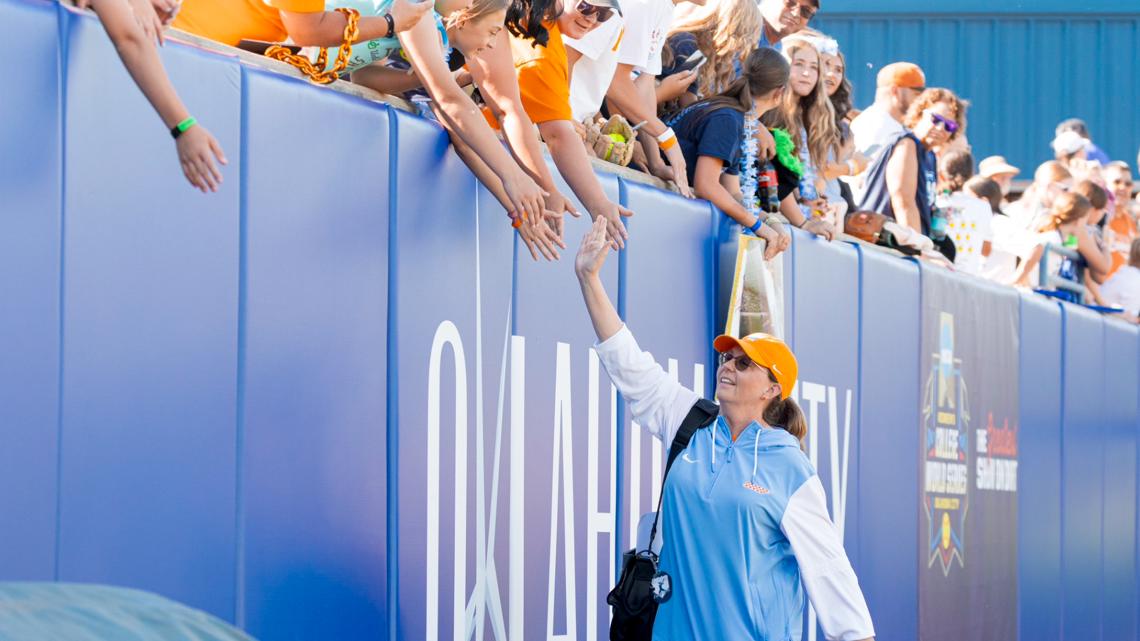
Former Tennessee star Taylor Pannell transferred to Texas Tech hours after entering the portal, which immediately fueled speculation that tampering was involved.
KNOXVILLE, Tenn. — Former Tennessee softball infielder Taylor Pannell entered the transfer portal on Thursday with a “do not contact” tag. Hours later, the redshirt sophomore announced her commitment to Texas Tech.
In the new era of name, image and likeness, where money is becoming the main draw for student-athletes, tampering allegations are becoming commonplace in college sports. Tampering involves a school or NIL collective approaching an athlete while they are still playing at another school and striking an under-the-table deal to convince them to enter the transfer portal to play for them.
Tampering is against NCAA rules, and a school can file a complaint to have the NCAA investigate.
Although it is not confirmed Pannell had discussions with Texas Tech before entering the portal, the immediacy in picking a new school quickly fueled concerns she might have already lined up a deal with the Red Raiders.
UT softball head coach Karen Weekly expressed her feelings about NIL and the portal on her X account saying, “money isn’t the issue – tampering is!”
“Contacting players (directly or indirectly) before their season ends and signing them to NIL deals before they enter the portal is wrong,” she said.
Pannell was Tennessee’s star hitter during the 2025 season. She led in almost every offensive category, including home runs and RBIs. Her departure is the most significant loss for the Lady Vols in recent memory.
NIL
Batt’s MSU Deal Deal Mandates College Sports Commission Cooperation
New Michigan State athletic director J Batt will be required to “cooperate fully” with any investigations conducted by the College Sports Commission (CSC), according to a copy of his recently signed contract. Batt’s $12.6 million deal is one of the first publicly known athletic department employment agreements to explicitly reference the CSC, which was officially […]
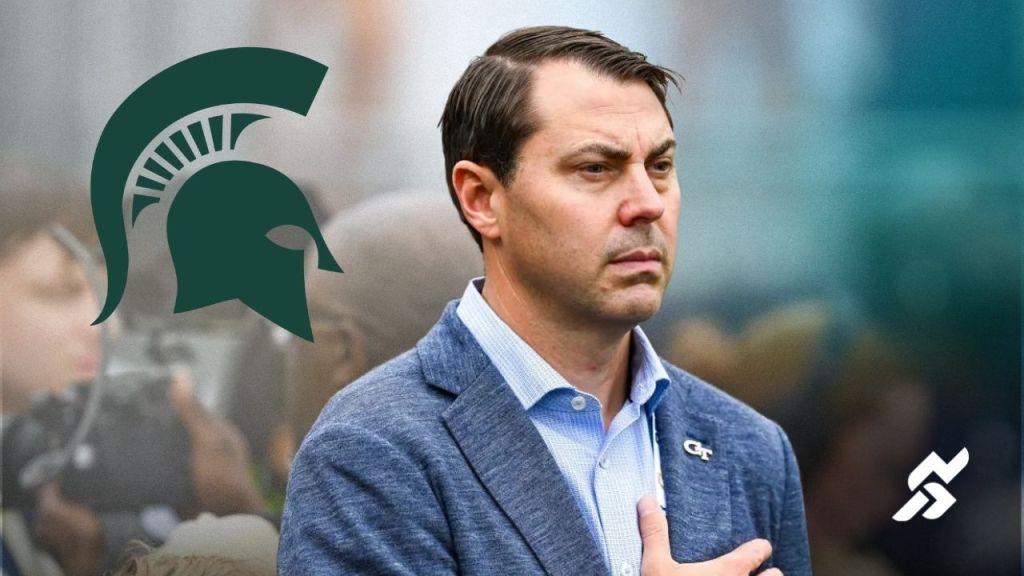
New Michigan State athletic director J Batt will be required to “cooperate fully” with any investigations conducted by the College Sports Commission (CSC), according to a copy of his recently signed contract.
Batt’s $12.6 million deal is one of the first publicly known athletic department employment agreements to explicitly reference the CSC, which was officially unveiled last week following Judge Claudia Wilken’s approval of the House v. NCAA settlement. The for-profit oversight body is tasked with regulating NIL payments to college athletes.
“More will be required of all of us than it has in the past,” Batt wrote in an open letter following Wilken’s sign-off. “We might be required to work harder or give more.”
Or, cooperate more.
Batt’s six-year agreement, signed Thursday and released Friday in response to a public records request, also requires him to faithfully comply with any “third-party enforcement entity used by the CSC.”
Batt accepted the Spartans’ offer after serving as athletic director of Georgia Tech since 2022. As part of his agreement, MSU will pay his liquidated damages obligation of $2,002,380.95 to Georgia Tech for prematurely ending his employment agreement with the ACC school.
Batt is set to earn $1.85 million in his first year at Michigan State as part of an arrangement that will increase by $100,000 each year thereafter through June 2031. Additionally, Batt would be eligible for an unspecified “performance bonus” based on criteria agreed to by the school’s president.
If Batt chooses to terminate the agreement early, he—or potentially his future employer—would be responsible for a buyout payment structured as follows: $5 million if the departure occurs within the first two years of the contract, $4 million in the third year, $3 million in the fourth year and $2 million in the fifth year.
Conversely, should Michigan State terminate Batt without cause, the university would owe him 75% of his remaining base salary.
Batt steps into the role previously held by Alan Haller, taking charge of a Big Ten athletic department still reeling from a series of scandals. These include a $500 million settlement with survivors of sexual abuse by former team doctor Larry Nassar and the 2023 firing of head football coach Mel Tucker, who was accused of sexually harassing Brenda Tracy, a sexual violence prevention educator hired by the department.
Michigan State’s $180 million budget in 2023-24 ranked sixth among the Big Ten’s then-13 public universities, according to Sportico’s college sports finances database.
NIL
Urban Meyer crowns a new king in the race for college football conference supremacy
Urban Meyer said what many have been thinking for the past couple of years: the Big Ten may have passed up the SEC. Winning the last two National Championships certainly helps their case for conference supremacy. Still, it is the more minor nuances that have analysts like Meyer wondering aloud if there has been a […]

Urban Meyer said what many have been thinking for the past couple of years: the Big Ten may have passed up the SEC. Winning the last two National Championships certainly helps their case for conference supremacy. Still, it is the more minor nuances that have analysts like Meyer wondering aloud if there has been a power shift.
Big Ten schools like Ohio State and Michigan have leaned on their alumni to provide NIL resources that have allowed them to compete with SEC schools and win. One of the most notable NIL-driven flips of 2025 was Michigan reclaiming hometown talent Bryce Underwood from SEC powerhouse LSU. Michigan reeled Underwood in with an NIL package rumored to be in the $12-million range. They also utilized one of their most powerful alums to help sway Underwood. Jolin Ellison is the wife of Larry Ellison, the second-richest man in the world, and the founder of Oracle. She and her husband were given multiple shoutouts on social media during the flip of Underwood.
The power shift is not just evident on the field and recruiting trail; the Big Ten has also become a serious issue in the transfer portal. They have routinely pulled talent from SEC programs and used those ready-made players to push themselves into the College Football Playoff and National Championship narrative. Here is what Urban had to say about the culmination of the Big Ten’s resurgence.
“Well, you know what the SEC’s done? It’s raised the level, but the Big Ten has passed the SEC at the upper part. If you would have told me that 10 years ago, I would’ve said it’s not even close. Because it’s not.”
– Urban Meyer
While the SEC has stumbled over the last couple of years, it is by no means dead. Schools like Alabama, LSU, and Florida have a history and alumni base to compete with the Big Ten. As NIL continues to evolve, the SEC will make changes to ensure that it is considered a top-tier conference and able to rival the powerful pull and resources of Big Ten powerhouses. For now, it appears that the Big Ten may have surpassed its SEC rivals.
NIL
Top 10 men’s college basketball players with highest NIL valuations
The NIL era in college basketball is reshaping players’ financial landscapes, with top recruits now turning down the NBA Draft to maximize their endorsements. Players like Cooper Flagg have emerged as substantial earners through NIL deals, while others, such as Dybantsa at BYU, have negotiated multimillion-dollar contracts with their schools. This trend emphasizes how lucrative […]

The NIL era in college basketball is reshaping players’ financial landscapes, with top recruits now turning down the NBA Draft to maximize their endorsements. Players like Cooper Flagg have emerged as substantial earners through NIL deals, while others, such as Dybantsa at BYU, have negotiated multimillion-dollar contracts with their schools. This trend emphasizes how lucrative NIL agreements can be, compelling early-entry candidates to withdraw from drafts and stay in college. This report highlights the top ten players with the highest NIL valuations as they prepare for the upcoming season.
By the Numbers
- Dybantsa has an estimated NIL deal worth around $7 million from BYU.
- Toppin is expected to earn approximately $4 million in NIL after deciding to stay at Texas Tech.
State of Play
- At least 50 players withdrew from the 2025 NBA Draft to capitalize on NIL opportunities.
- Teams are increasingly using NIL deals to retain top talent, like Lendeborg at Michigan with a reported $3 million package.
What’s Next
As the new season approaches, expect further shifts in player decisions influenced by NIL opportunities, and more schools could ramp up their spending to attract and retain talent. This could lead to higher stakes in recruiting battles as financial leverage becomes increasingly critical.
Bottom Line
The rise of NIL valuations signifies a transformative moment in college sports, where financial considerations may overshadow traditional pathways like the NBA Draft. Players are choosing college for lucrative contracts, reshaping the landscape of collegiate athletics.
NIL
MSU AD's Deal Forces Compliance With NIL Oversight Group
New Michigan State athletic director J Batt will be required to “cooperate fully” with any investigations conducted by the College Sports Commission (CSC), according to a copy of his recently signed contract. Batt’s $12.6 million deal is one of the first publicly known athletic department employment agreements to explicitly reference the CSC, which was officially […]
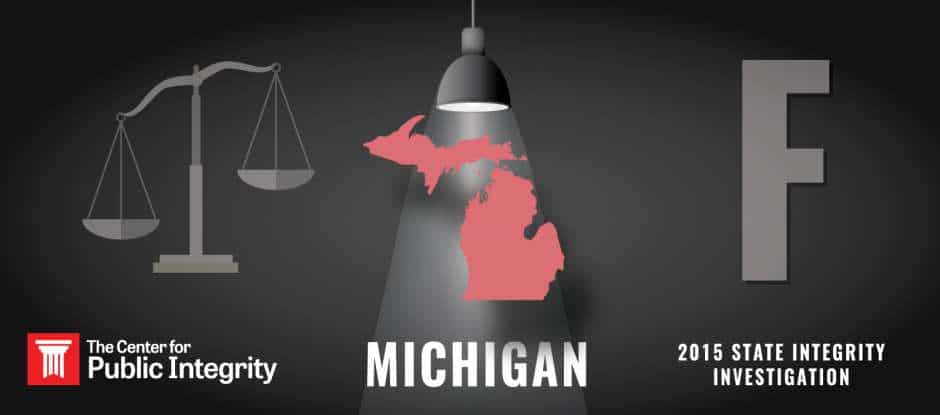
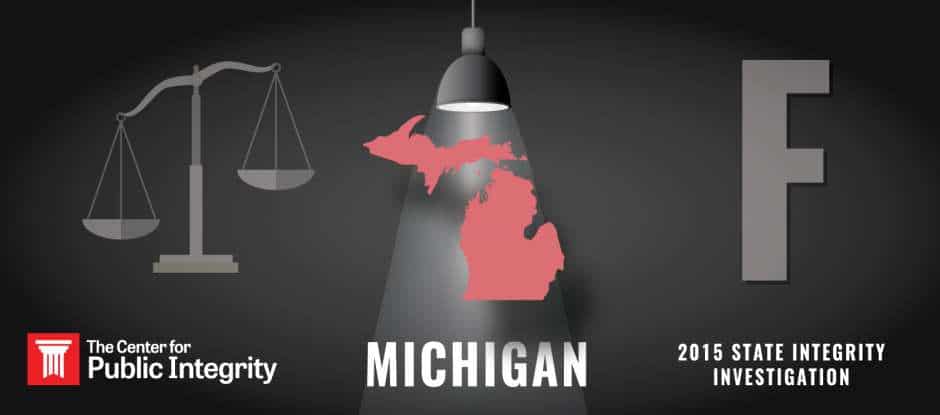

New Michigan State athletic director J Batt will be required to “cooperate fully” with any investigations conducted by the College Sports Commission (CSC), according to a copy of his recently signed contract.
Batt’s $12.6 million deal is one of the first publicly known athletic department employment agreements to explicitly reference the CSC, which was officially unveiled last week following Judge Claudia Wilken’s approval of the House v. NCAA settlement. The for-profit oversight body is tasked with regulating NIL payments to college athletes.
“More will be required of all of us than it has in the past,” Batt wrote in an open letter following Wilken’s sign-off. “We might be required to work harder or give more.”
Or, cooperate more.
Batt’s six-year agreement, signed Thursday and released Friday in response to a public records request, also requires him to faithfully comply with any “third-party enforcement entity used by the CSC.”
Batt accepted the Spartans’ offer after serving as athletic director of Georgia Tech since 2022. As part of his agreement, MSU will pay his liquidated damages obligation of $2,002,380.95 to Georgia Tech for prematurely ending his employment agreement with the ACC school.
Batt is set to earn $1.85 million in his first year at Michigan State as part of an arrangement that will increase by $100,000 each year thereafter through June 2031. Additionally, Batt would be eligible for an unspecified “performance bonus” based on criteria agreed to by the school’s president.
If Batt chooses to terminate the agreement early, he—or potentially his future employer—would be responsible for a buyout payment structured as follows: $5 million if the departure occurs within the first two years of the contract, $4 million in the third year, $3 million in the fourth year and $2 million in the fifth year.
Conversely, should Michigan State terminate Batt without cause, the university would owe him 75% of his remaining base salary.
Batt steps into the role previously held by Alan Haller, taking charge of a Big Ten athletic department still reeling from a series of scandals. These include a $500 million settlement with survivors of sexual abuse by former team doctor Larry Nassar and the 2023 firing of head football coach Mel Tucker, who was accused of sexually harassing Brenda Tracy, a sexual violence prevention educator hired by the department.
Michigan State’s $180 million budget in 2023-24 ranked sixth among the Big Ten’s then-13 public universities, according to Sportico’s college sports finances database.
NIL
U.S. Soccer Pushes Big College Plans as National Team Struggles
On the same day the U.S. men’s national team laid a 4-0 egg against Switzerland in a friendly, getting booed off the field at halftime of a fourth straight loss Wednesday, U.S. Soccer laid a big bet: that the organization can transform the sport at the college level and create a world-class minor league. The […]
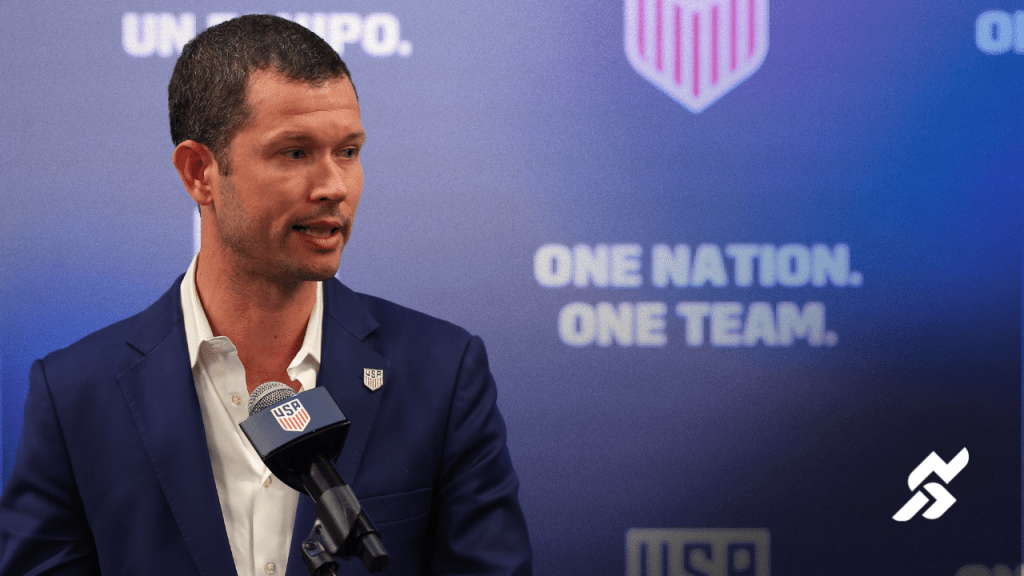
On the same day the U.S. men’s national team laid a 4-0 egg against Switzerland in a friendly, getting booed off the field at halftime of a fourth straight loss Wednesday, U.S. Soccer laid a big bet: that the organization can transform the sport at the college level and create a world-class minor league. The juxtaposition was stark.
Off the field, U.S. Soccer is aggressively pushing boundaries. By this fall, the national governing body said, the newly formed NextGen College Soccer Committee will issue a “white paper” on a path forward for college soccer, which in the past 15 years has become an afterthought in terms of elite player development. U.S. Soccer’s plan is for at least some college programs to compete under a revamped format as early as next year, perhaps with a new year-round playing calendar, expanded commercial objectives and far tighter links to the national governing body.
On the field, the men’s national team is in a defensive crouch. Fans and pundits are on the verge of panic after a string of dismal performances just a year out from the 2026 World Cup on home soil. The USMNT opens play in the CONCACAF Gold Cup on Sunday against Trinidad and Tobago; the tournament will be the squad’s last competitive matches before the World Cup.
While the men’s team is struggling, U.S. Soccer is on a roll organizationally, raising millions of dollars from well-heeled corporations and billionaire donors, building a new national training center and headquarters in Atlanta, and pushing proposals to expand the game’s reach in the country. The governing body can also point to the women’s national team, which has regained its perch atop the global game since the hire of head coach Emma Hayes last year.
In an interview with Sportico, U.S. Soccer CEO JT Batson expounded on his organization’s ambitious goals for the college game.
“The best 18- to 22-year-old soccer players in America are opting to play professionally now, and that shows the growth of the American soccer market,” Batson said. “It also shows the opportunity around evolving around college soccer—that it can become the best U-23 league in the world.”
The college reform efforts, part of a U.S. Soccer “service to soccer” initiative, will involve both men’s and women’s soccer. Batson says the committee has yet to work out the details, but the death of college-sports amateurism in the wake of NIL reforms and the House antitrust settlement will drive their discussions.
The potential for players to make money from NIL and revenue-sharing “is part of the reason why the folks from the pro leagues and some of the folks who own pro clubs think college can be a positive pathway for elite players,” Batson said. “But it’s going to require some changes, and that’s the heart of the work that everyone’s focused on.”
Existing college infrastructure, the chance for an education and the opportunity to make some money might be attractive to players who aren’t signed to million-dollar contracts with top clubs as teenagers. There may even be the possibility of MLS, NWSL or USL franchises using college squads as farm teams—which have become an area of interest for investors.
While player development is a focal point, commercial interests are also driving the moves.
“Most of the commercial energy and effort in college sports has been focused on football and men’s basketball,” Batson said. “There’s nobody waking up thinking about how to drive revenue at any sense of scale for college soccer. And we think there are opportunities, if you look at this as a nationwide platform, to be able to drive new commercial value in a way the prior model didn’t allow for.”
Such opportunities exist with media rights, for example, which Batson says are often “fragmented and highly localized” in college sports.
With more than 200 men’s and 300 women’s teams already in Division I, the sport could offer untapped national and regional sponsorship possibilities, especially with a year-long season and more talented players on rosters.
Speaking of players, any new format would likely include a geographical reorganization of competing teams. Recent conference realignments have led to “players living on planes,” Batson said. “From a student-athlete welfare standpoint, you have a lot of college leaders who believe we have to end up with more regional models than we have today.”
A huge hurdle will be the NCAA rulebook, which right now restricts pay-for-play, practice time and the length of the season. Changing that rulebook through the NCAA’s legislative process has historically been a glacial process.
Batson says the tumult in college sports gives soccer a chance to present a test case for a new era. “We’ve been in direct conversations with college presidents, with conference leaders, who are all very excited about soccer being able to help lead to a future model for a broad set of college sports. Everyone recognizes that status quo has its challenges,” and there’s been “an evolution of how college sports is thinking about its own governance and its own rules.”
When word leaked about U.S. Soccer’s nascent reform proposals presented to college coaches over the winter, the pitch was seen as a national governing body-sponsored “breakaway” of the college game from the NCAA.
As Sportico reported, early discussions included the Big Ten and ACC, who might form the basis of an experimental test conference. That prompted others in the sport to wonder whether successful mid-major programs such as national champion Vermont, along with fellow Final Four teams Denver and Marshall, might be shunted aside.
Batson emphasized that U.S. Soccer is “very agnostic as we start this process as what the future of governance model should be, and who is the quote-unquote organizer of the competitions. There’s so much change going on in college sports, we’re happy with any positive outcome that leads to more opportunities for players and coaches to develop. We don’t start with a preconceived notion of what that should look like.”
Though Batson didn’t say this, others in the sport have postulated that the new model could range from continued NCAA governance to an entity that eventually splits off completely from the association.
“We’ve been doing a whole body of work around this at U.S. Soccer with all of our stakeholders for quite some time now, and one of the things that bubbled to the top of the priority list was, ‘What does the next generation of college sports look like, and college soccer in particular?’” Batson said. “Conceivably, the right thing for year one may be different than a future state of things.”
-

 Health1 week ago
Health1 week agoOregon track star wages legal battle against trans athlete policy after medal ceremony protest
-

 College Sports2 weeks ago
College Sports2 weeks agoIU basketball recruiting
-

 Professional Sports1 week ago
Professional Sports1 week ago'I asked Anderson privately'… UFC legend retells secret sparring session between Jon Jones …
-

 NIL3 weeks ago
NIL3 weeks ago2025 NCAA Softball Tournament Bracket: Women’s College World Series bracket, schedule set
-

 Professional Sports1 week ago
Professional Sports1 week agoUFC 316 star storms out of Media Day when asked about bitter feud with Rampage Jackson
-

 Rec Sports2 weeks ago
Rec Sports2 weeks agoScott Barker named to lead CCS basketball • SSentinel.com
-

 Rec Sports2 weeks ago
Rec Sports2 weeks agoJ.W. Craft: Investing in Community Through Sports
-

 Motorsports2 weeks ago
Motorsports2 weeks agoNASCAR Penalty Report: Charlotte Motor Speedway (May 2025)
-

 Motorsports2 weeks ago
Motorsports2 weeks agoRockingham Speedway listed for sale after NASCAR return
-

 NIL3 weeks ago
NIL3 weeks agoGreg Sankey: ‘I have people in my room asking, why are we still in the NCAA?’






























